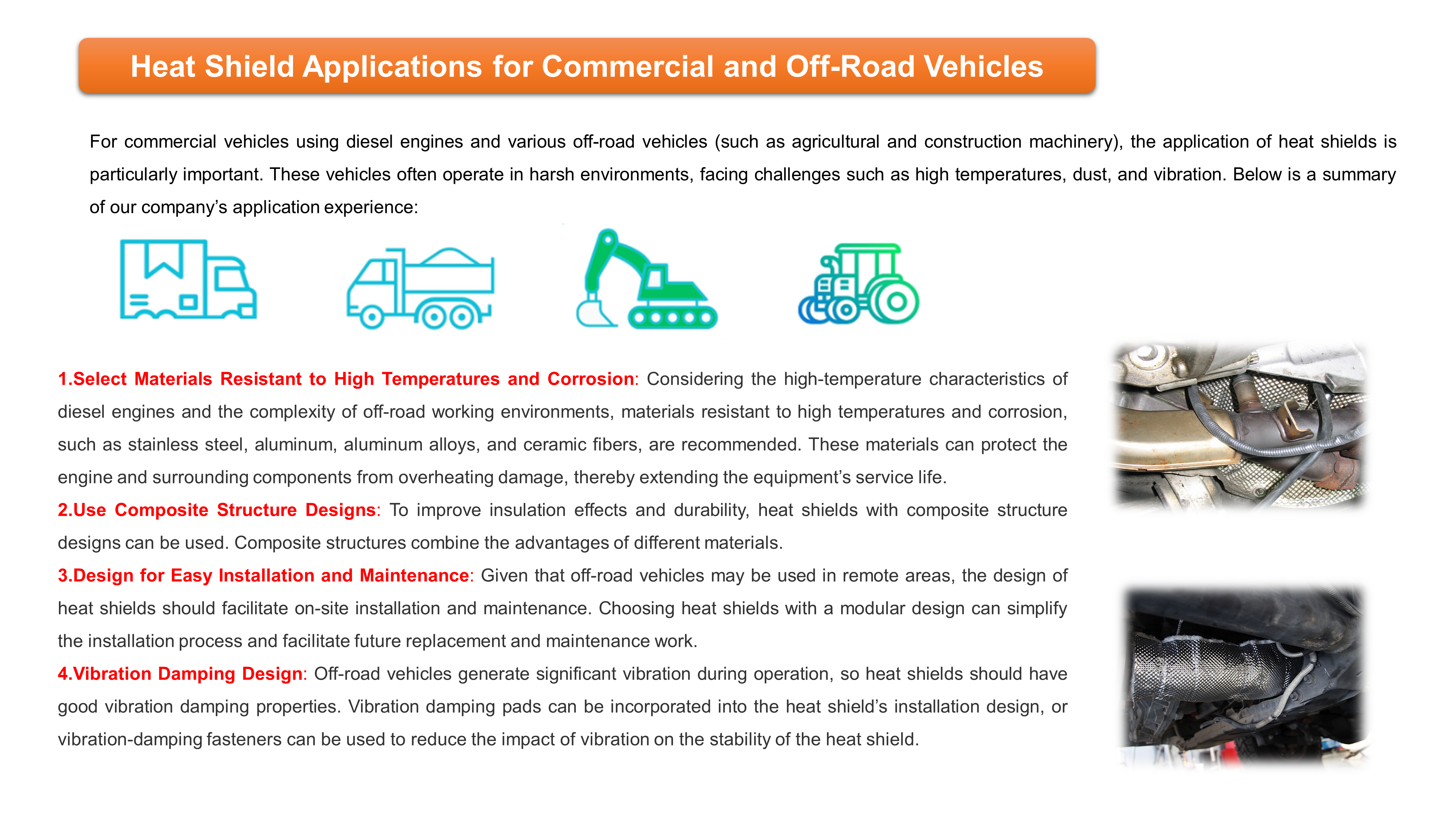PRODUCTS CENTER
Contact Us
Heat shields/exterior parts
|
Material Type |
material properties |
|
Thin Aluminum Plate 1060-O |
|
|
Thick aluminum plate 1060-O |
Thick aluminum plate has good heat insulation, and strength better than thin aluminum plate, has light weight and easy to form shape. Anodized surface treatment will provide much better performance. The cost is relative high. Recommend to use for light vehicles exterior parts requesting very high heat insulation performance. |
|
Heat-resistant Aluminum Plate for deep drawing |
|
|
Stainless steel |
Has very good strength, but not easy to achieve complex forming, mostly used for bending structural parts. Has excellent corrosion resistance but relatively high price. Commonly used in normal heat insulation but very high strength structure. And used for fine exterior parts which need polishing, wire drawing and other surface treatments. |
Aluminum is the most ideal heat insulation material:
(1) Provide high reflectivity and low emissivity, it could absorb and reemit infrared radiation;
(2) Provide high thermal conductivity to ensure heat energy could quickly conduct from the potential hot spot to the aluminum heat shield;
(3) Provide high specific heat capacity. This means that after it absorb a certain amount of heat energy, the temperature rise much lower than many other materials. In the vehicle body, 70% of the thermal management tasks can be handled by aluminum surface alone. The remaining 30% must be handled by the properly designed heat shield.
(4) Provide excellent corrosion resistance. Environmental factors such as humidity and high temperature accelerated the corrosion of the heat shield. In addition, most of the heat shield is directly exposed to road pollution. Pollutants such as brine, liquid asphalt, street dirt and mud. Aluminum will not lead unacceptable heat shield corrosion over the lifetime of vehicle.
(5) Provide adequate fracture resistance. Gravel and slight ground contact may cause local deformation of the lower heat insulation plate. The aluminum structure of the heat insulation cover is not prone to cracking.
(6) Different thicknesses of aluminum plates can be flexibly adapted to meet the various forming and service requirements for heat shields. The heat shield must be as close as possible to the hot source. Space is very limited, especially in the engine compartment and the chassis area, so the heat shield usually has a rather complex shape in order to closely fit the different parts and components.
Teamful Sealing Heat Shields Case Study
|
Heat Shields Design |
Heat Insulation Performance Summary |
|
Aluminized Steel Heat Shield |
The mechanical properties are close to stainless steel plate. The surface is aluminized for heat insulation and corrosion protection. Provide very good structural strength and low cost, but the molding ability is general. It’s heavy and mostly used for parts requesting low temperature insulation and high strength structure. |
|
Sandwich Heat Shields ( Aluminized Steel Plate + Heat Insulation Filler ) |
Commonly used for exhaust manifold heat shields. But when the temperature exceeds 600 °C, ablation problem occurs in the aerobic environment, which will lead bad affect the heat insulation and the high temperature resistance becomes worse. |
|
Sandwich Heat Shields (Thin Aluminum Plate + Heat Insulation Fiber/Ceramic Fiberboard ) |
Aluminum plate itself has good heat insulation performance, but when the temperature of heat insulation fiber board exceeds 600 °C, ablation problem occurs in the aerobic environment, which will lead bad affect the heat insulation and the high temperature resistance becomes worse. Ceramic fiber board can withstand temperatures up to 1000 °C. But the overall structural strength is poor and easy to deform. |
|
Embossed Aluminum Plate + Reinforced Mesh Washer/ Damping Washer (single layer, double layer) |
Good heat insulation effect, light weight. When mesh washers or damping washers applied, the heat shields can be directly installed on the heat surface of 850 °C. Has a high molding ability and vibration resistance, good noise attenuation performance. This type of heat insulation structure is not easy to deform and crack. |






